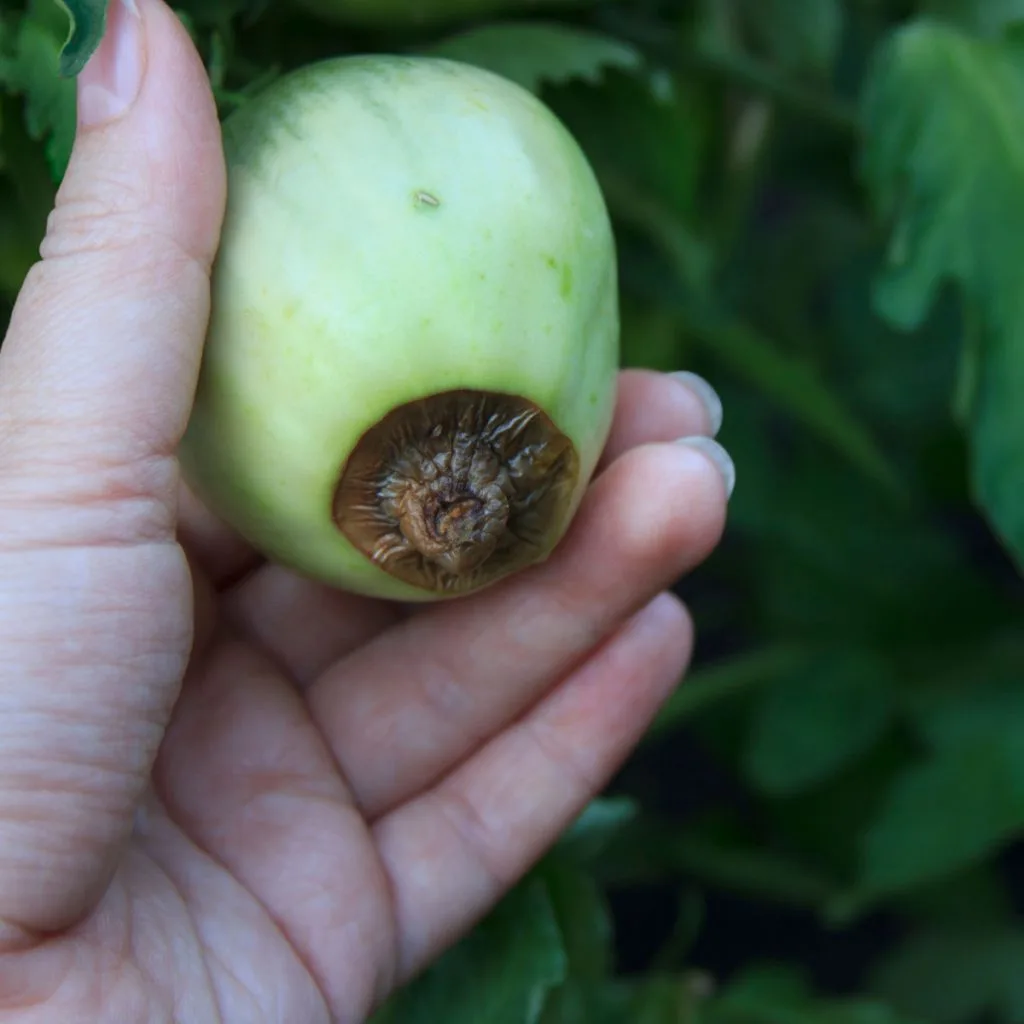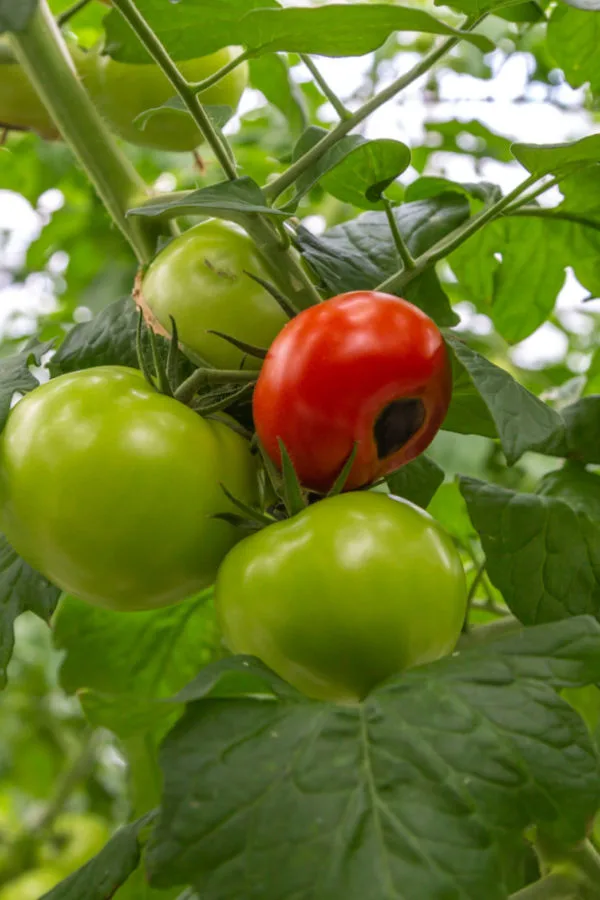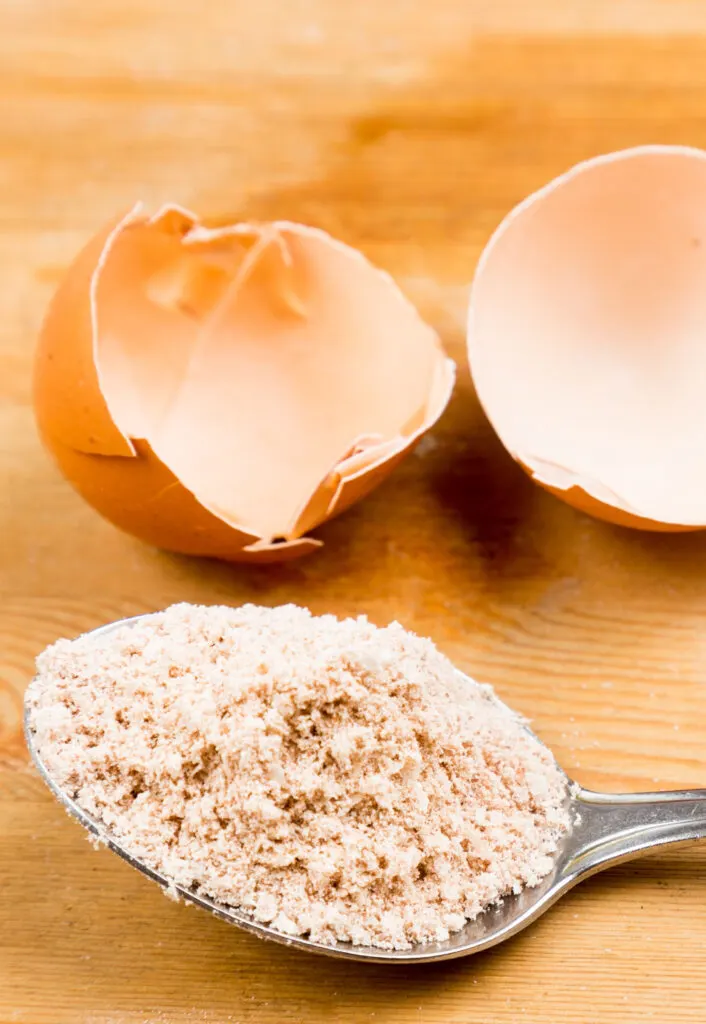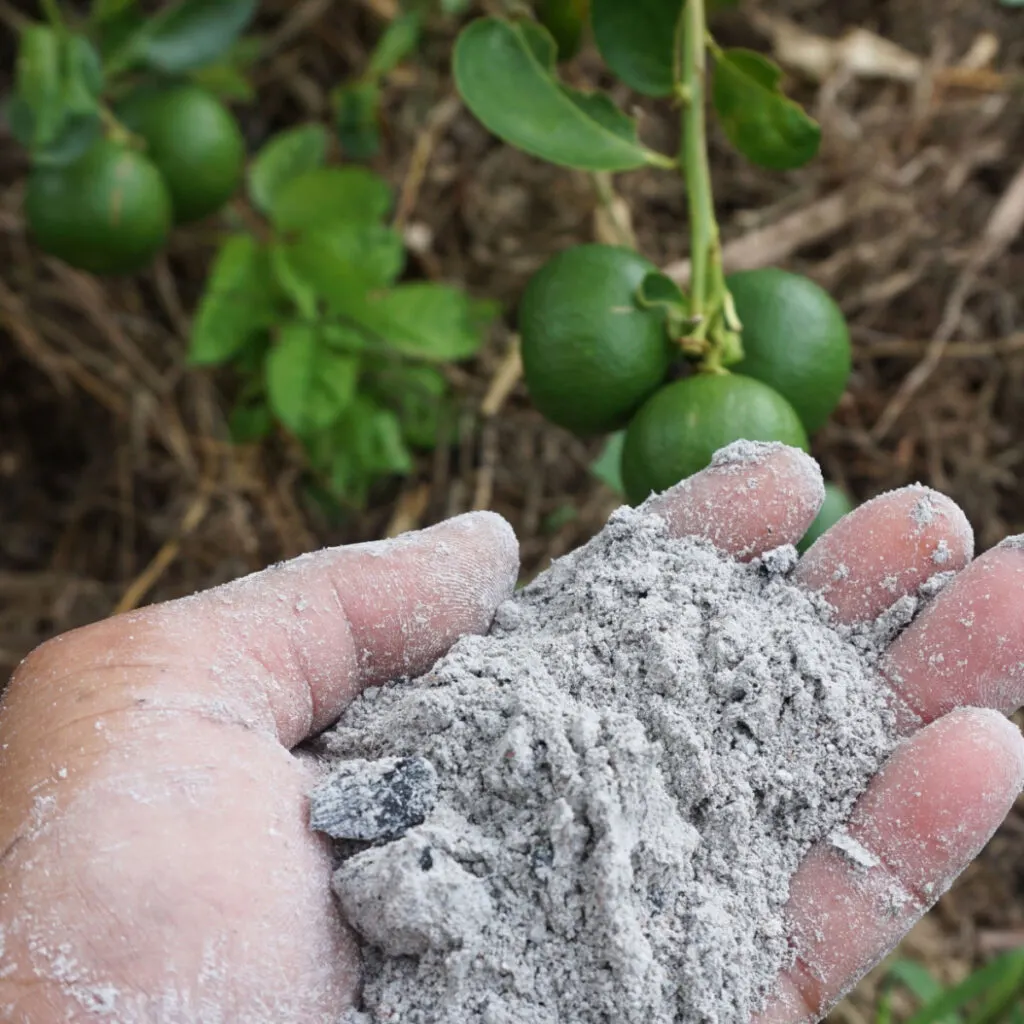Looking for a few simple ways to keep your tomatoes from getting blossom end rot this year?
There is nothing more discouraging than watching a perfectly healthy tomato plant produce tomatoes that suddenly begin to brown off on one end – and then slowly see those tomatoes rot away!
Blossom end rot occurs at the end of fruits as they develop and ripen. In essence, the tissue on the flowering end of the fruit rots away. In the process, it leaves behind an ugly brown scar. One that severely impacts the health and vitality of the tomato, and the plant’s overall yield. It can be frustrating for sure, but the good news is that this issue can usually be prevented – and all with just a little bit of extra care.

What Causes Blossom Rot – And How To Keep Tomatoes From Getting It!
Blossom end rot is not a disease or an infection that spreads from plant to plant. Nor is it a soil borne issue like tomato blight that lies in wait to return year after year. Instead, it is caused by one simple problem – a lack of calcium being absorbed by the plants.
Unfortunately, although it’s notorious for ruining tomato plants, it can also affect zucchini, squash, pepper and eggplant as well. Many who deal with blossom end rot assume the issue all stems from lack of calcium in the soil. And many times, that is indeed exactly the case.
But it’s important to note that in addition to a lack of available calcium, there can also be other underlying conditions or issues that can prevent your vegetable plants from absorbing the vital mineral. Even when there is plenty of calcium already in the soil!
The real key to success in preventing the issue is to cover both bases. First – making sure your soil is supplied with enough calcium. And second – making sure the soil doesn’t have any issues getting that calcium up into your plants.
Fixing A Lack Of Calcium
To be sure, most issues surrounding blossom end rot have to do purely because the soil does not have enough calcium in it. Luckily, that is a very easy issue to overcome!

First and foremost, the practice of crop rotation is vital in keeping calcium at the ready for plants. In fact, crop rotation is extremely important for keeping all of the nutrients plants need for strong, healthy growth in good supply.
Vegetable plants feed from the soil as they grow and develop. And whether it is corn, beans, lettuce or tomatoes, each vegetable uses a different set of nutrients to thrive. But by moving these crops around, the soil has a chance to replenish what might have been taken from the plants that grew in the space previously.
The simple fact of the matter is if you plant the same plant variety in the same soil space year after year, the soil will eventually run out of nutrients that specific plant needs. Case in point, calcium for tomatoes.
But by rotating your tomato crop each year, you can help alleviate the issue. For best results, rotate your tomatoes so that they never grow in the space for at least three full seasons. And for potted tomatoes, changing out the soil ever year is a must.
Replenishing Calcium Levels In The Soil To Avoid Blossom End Rot
Beyond crop rotation, it’s also important to routinely replenish the calcium levels in garden soil. One of the quickest and easiest ways to do this is by adding pulverized egg shell powder into the soil – right as you plant!

Egg shells contain over 90% calcium carbonate. And by using a few tablespoons of finely crushed egg shells into each planting hole as you plant – you can allow the soil and the plant’s roots to be able to have quick access to it. But the key is to grind the egg shells as finely as possible. See our article: How To Use Egg Shells To Grow Incredible Tomatoes!
Whole shells or partial shells can take months and months to decompose. And they won’t help this year’s plants. But by powderizing the shells, the nutrients can quickly absorb.
In addition to adding crushed egg shell powder, you can also add, wood ashes, bone meal or lime to the soil to help increase calcium levels. Affiliate Link: Jobe’s Organics Garden Lime
How To Make Sure Plants Can Absorb Calcium
As mentioned before, many times, there can actually be plenty of calcium present in the soil, but the plants simply can’t take it in. When it comes to this issue, there are usually 3 main culprits: improper watering, over-fertilizing, or having a compacted root system for your tomato plant.
Both over and under-watering play a huge factor in causing blossom rot. When a plant receives too much water, the roots are unable to take in nutrients. As they swell with water, they lose their ability to absorb. The same goes for when the roots shrivel from drought-like conditions. That is why proper watering is vital!

Tomatoes should receive around an inch of water per week to help develop healthy root systems. If your plants begin to turn yellow, it’s a sign that over-watering is occurring. Likewise, if plants are wilted and the leaves are curling up, there is not enough water in the soil for the plants to grow and develop.
When you water, it’s more important to water deeply than more frequently. Frequent, shallow watering does not allow the roots to grow deep into the soil. Not only does it lead to the roots drying out too quickly, it also means the roots are not deep enough to get to more of the calcium in the soil.
Compacted Roots
Another way tomato plants have difficulty absorbing calcium is when their roots are compacted in the soil. Packed soil suffocates the tiny intakes within the root nodules. When this happens, the tomato plants can’t absorb water or nutrients.
To keep soil from getting crushed down, keep foot traffic around plants to an absolute minimum. Especially within 12 to 18 inches in diameter around each plant. This allows the soil to remain loose and free for easy nutrient intake.Over Fertilizing
As the old saying goes, too much of a good thing can be a bad thing. And that is certainly the case when tomato plants are over-fertilized.
When tomatoes receive too heavy of a dose of nitrogen magnesium and phosphorous, they can crowd out the intake of calcium. The result is heavy top growth and a mess of tomatoes with blossom end rot! Fertilize low and slow with tomatoes to keep growth steady and strong.

Early Season Blossom End Rot
One final note about blossom end rot. In the early spring, it’s quite common for the first few tomatoes on a plant to show some signs of blossom end rot. This is actually from the initial stress of fruit production, and not always a sign of a calcium deficiency.
Simply pick these first few tomatoes off the vine and allow the plant to settle into normal production. If the problem persists into the second or third week, then it’s time to consider a calcium issue being the problem. Here is to stopping tomato blossom end rot, and to a great tomato harvest this year! For more information keeping your tomato plants healthy and producing big, be sure to check out: Why Your Tomato Leaves Are Turning Yellow – And How To Fix The Problem!
This Is My Garden
Follow Our Facebook Page For Great Gardening Tips And Advice! This Is My Garden Facebook Page
This Is My Garden is a garden website created by gardeners, for gardeners. Jim and Mary Competti have been writing gardening, DIY and recipe articles and books and speaking for over 15 years from their 46 acre Ohio farm. They publish three articles every week, 52 weeks a year. Sign up today to follow via email, or follow along!
